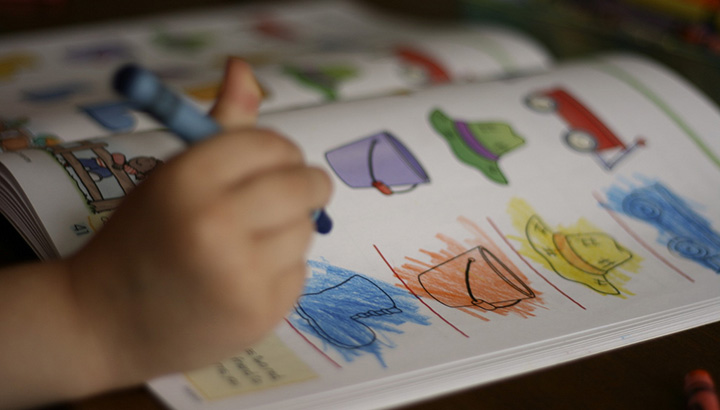How Parenting Has Changed the Way I Teach (and Sometimes Vice Versa)
Image: "school time" (CC BY-SA 2.0) by MissMessie
My partner and I moved from Chicago, IL, to Portland, OR, more than 1000 miles away from our families for a one-class-per-semester adjunct teaching gig when I was nearly seven months pregnant.
Please, hold your applause. Yes, we are obviously geniuses.
Opportunity had emerged in Portland that seemed worth exploring. We were invited to come and participate in a college that was reinventing its relationship to context, neighborhood, and questions of what it means to be faithful and responsible in this here and now. I wanted in on that. That first year, I gave birth, finished and successfully defended my dissertation, and taught those two classes for a whopping $3,000 total income for our family of three. Gratefully, at the end of that year, a full-time teaching position opened and I got the job. (You can breathe now.)
It turns out, thankfully, that I love teaching. I find in it the possibility to engage my student-colleagues in the exploration of roots, context, and questions of vocation and world-participation. The timing of my first child with the timing of the start of my full-time teaching career meant that my formation as mother and professor have emerged from the same soil. This informs how I am and how I do both. I have seen this even more plainly after the birth of baby two.
(Warning: genius statement approaching.) It turns out that my two children are two different people. (Again, please, hold your applause.) They look a lot alike, but my second child was not in the world long before I began to notice that she presents herself differently. She speaks a different language than her brother. She pays attention to different things. She is tuned into sound, rhythm, and movement whereas my first child was a problem solver, builder, crafter. They have different learning styles and different ways of expressing and communicating what they are coming to know.
That seems obvious, right? And yet, so many of my syllabi outlined particular assignments that followed one format. I wasn’t exactly a stranger to learning styles. I’d made intentional efforts to make sure that I facilitated class in various ways to connect with the different ways that we learn. I’d made intentional efforts even within each course to vary the types of assignments to help my diverse community of students learn. However, I still expected students to express themselves in a similar format for each particular assignment. My two children demonstrate this approach’s limitations.
So, I’m experimenting. Some of my assignments are looser. I’m concerned about outcomes, and I’m clear with my students about what those are. I’m concerned for the engagement of particular texts, contexts, and questions, and I’m clear with my students about what those are. But I’m experimenting with flexibility with how students demonstrate their learning. In essence, I’m saying: Here are the outcomes. Here are some raw materials. Now, show me what you’re discovering and why it matters and true to the ways you learn and the ways you communicate.
Sometimes it works. I’m discovering that some students know exactly how they learn and how they communicate. They jump on these assignments and the results are breathtaking. However, other students have no idea how they learn or how they communicate. They’re too used to being told how they’re “supposed to” in order to be “successful.” They still want to know how many pages the assignment is supposed to be (when it doesn’t even have to be a paper).
I still have much to learn. But (here comes another genius remark), I’m discovering that we all have much to learn. (Seriously, you’re too kind.)
As I participate in my children’s formation, as I pay attention to who they are and how they learn and communicate, I’ve also noticed that my son is changing. He’s noticed that his sister pays attention to things that he never before noticed. She enjoys things he never thought to try. And he’s deciding to try them. The same thing is happening in the classroom.
This has increased my work. My syllabi, grading rubrics, and course preps are in flux. I’m reminding myself that my children and students need the variety of experiences and opportunities to learn and express themselves and that I need to learn their languages even as I help them to learn and speak in their own. The process is sometimes thick. But, things in the classroom and at home are sticking better. For me, that’s been worth it.






